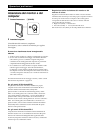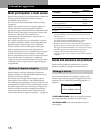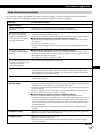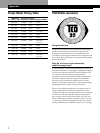
ii
Appendix
Preset Mode Timing Table TCO’99 Eco-document
Congratulations!
You have just purchased a TCO’99 approved and labelled
product! Your choice has provided you with a product
developed for professional use. Your purchase has also
contributed to reducing the burden on the environment and
also to the further development of environmentally adapted
electronics products.
Why do we have environmentally
labelled computers?
In many countries, environmental labelling has become an
established method for encouraging the adaptation of goods
and services to the environment. The main problem, as far
as computers and other electronics equipment are
concerned, is that environmentally harmful substances are
used both in the products and during their manufacture.
Since it is not so far possible to satisfactorily recycle the
majority of electronics equipment, most of these potentially
damaging substances sooner or later enter nature.
There are also other characteristics of a computer, such as
energy consumption levels, that are important from the
viewpoints of both the work (internal) and natural (external)
environments. Since all methods of electricity generation
have a negative effect on the environment (e.g. acidic and
climate-influencing emissions, radioactive waste), it is vital
to save energy. Electronics equipment in offices is often left
running continuously and thereby consumes a lot of energy.
Resolution
(dots × lines)
640 × 400
640 × 480
640 × 480
720 × 400
800 × 600
800 × 600
832 × 624
1024 × 768
1024 × 768
1024 × 768
1024 × 768
Horizontal
Frequency
31.5 kHz
31.5 kHz
37.5 kHz
31.5 kHz
37.9 kHz
46.9 kHz
49.7 kHz
48.4 kHz
56.5 kHz
60.0 kHz
60.2 kHz
Vertical
Frequency
70 Hz
60 Hz
75 Hz
70 Hz
60 Hz
75 Hz
75 Hz
60 Hz
70 Hz
75 Hz
75 Hz
Graphics Mode
PC-98
VGA-G
EVGA
VGA-Text
SVGA
ESVGA
Macintosh
16” color
VESA
VESA
EUVGA
Macintosh
19” Color
No.
1
2
3
4
5
6
7
8
9
10
11
i
Appendix


















